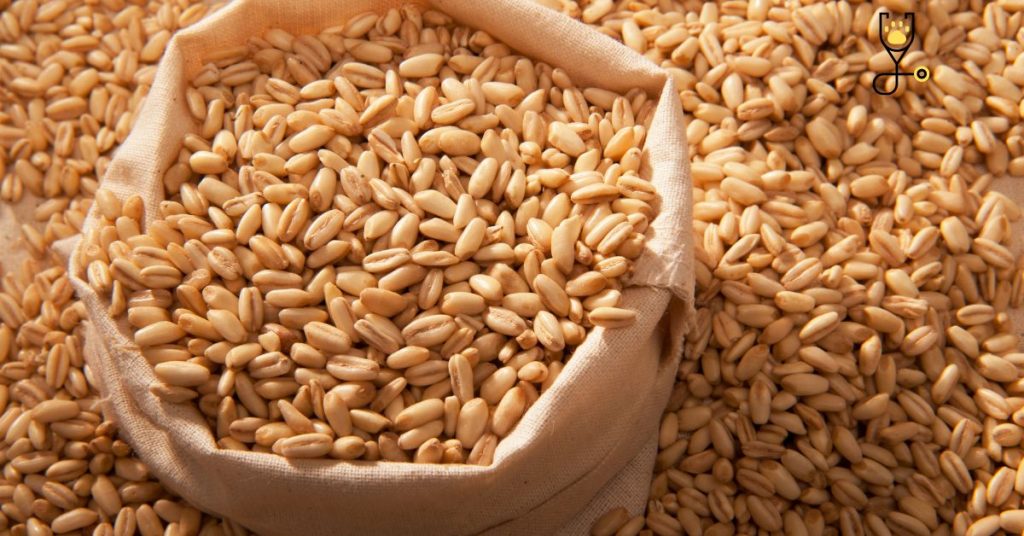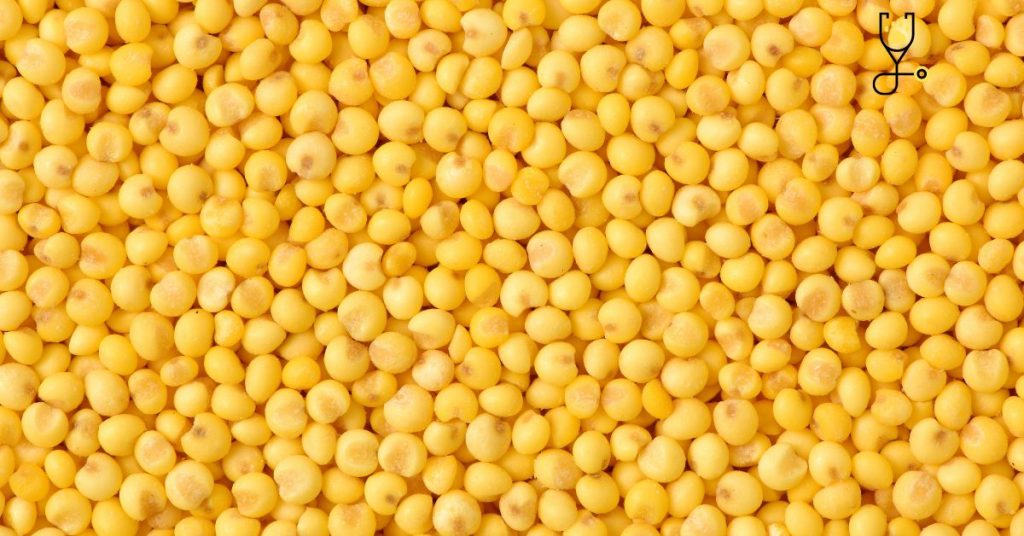There are a number of different horse feed grains, concentrates, and supplements on the market these days. Each has its own unique set of benefits for your horse. So, which one is right for your animal? In this blog post, we’ll take a look at the most common types of horse feed grains and concentrates and explore the pros and cons of each. Let’s get started!
What are feed grains and concentrates?
Feed grains are simply whole grains that have been ground up into fine powder. They can be made from any type of grain, but the most common ones used for horses are wheat, oats, and barley. Concentrates are similar to feed grains, but they also contain added vitamins, minerals, and other nutrients that are essential for your horse’s health.
10 Types of Horse feed grains and concentrates with benefits
1. BARLEY
Barley is a small-seeded cereal grain, that contains low moisture and high protein levels. The concentrate is also an excellent source of dietary fiber, a rich source of carbohydrates and B vitamins. It is used to replace oats in the diet. Barley reduces acidosis risk in horses (metabolic disturbances causing abnormal pH in the blood). Moreover, it increases appetite by improving digestion due to its richness both in storage proteins and nonstarch polysaccharide fractions that are resistant to enzyme attack from saliva. However, be careful with feeding barley as too much can lead to digestive problems such as colic or Laminitis.

2. OATS
Oats have a lower amount of starch and sugar levels. It is also a rich source of fiber, protein, B vitamins, and minerals. Oats are beneficial to your horse’s digestive health due to their ability in creating a barrier between the stomach acid and the intestine lining. They help reduce colic risk. Also have an impact on other conditions such as obesity, laminitis, and impaired insulin sensitivity that can lead to diabetes type 2.

3. WHEAT
Wheat is one of the most popular grains used as a feed ingredient for horses. Wheat is high in fat content which makes it easy to digest while having sufficient amounts of nutrients such as protein, vitamin B complex, and minerals like calcium, phosphorus, and magnesium (a good alternative source instead of corn). However, it has low fiber content. Glycemic index (GI) is a level to measure how fast the starch in the grain breaks down into sugar and raises blood sugar levels, wheat has high GI so try not to feed too much if you have horses prone to insulin resistance.

4. CORN
Corn contains more energy than any other cereal grains but it can be dangerous because of its low nutritional value combined with its high risk for digestive problems such as colic or laminitis.

5. RYE
Rye is a crop that performs better if fed either on the field or wet without drying up in storage as most cereals do, this makes it an excellent substitute for barley, oats, wheat, and corn in horse feeds. However, there are controversies over rye because it is the only one of all that contains toxic substances called ergot alkaloids, which can cause laminitis in horses.

6. BLUEGRASS
Bluegrass is not a cereal grain but an herbaceous plant that grows on wetlands and like most legumes, it is high in protein since it has more than 20% of crude protein content to be considered a good feed source for horses. It also contains high amounts of phosphorus, calcium, and magnesium making it another good alternative for horses with metabolic disturbances such as Laminitis due to its ability to reduce acidosis risks by neutralizing stomach acidity

7. HEMPSEEDS
Hempseed is known as one of the most nutritional plants ever cultivated by humans. It is rich in protein, carbohydrates, and minerals such as calcium, magnesium, and phosphorus (helps with laminitis) but also a good source of omega-3 fatty acids (reduces inflammation) and 6 which helps the immune system.

8. SOYBEANS
A soybean is an excellent option for grain feeds due to its high protein content (which increases muscle growth), amino acid profile, and low-fat levels while being one of the least allergenic grains around so you can use it safely on any horse without worries.

9. MILLET
Millet contains lots of nutrients such as protein, vitamins A and B complex, and dietary fiber that make it a great choice for horse feed, especially during weaning or when the horse is experiencing digestive problems such as colic or laminitis.

10. FLAXSEED
Flaxseed is a great source of fatty acids (omega 3, helps relieve inflammation and prevents diseases) with high amounts of protein and dietary fibers while being low in carbs, it makes an excellent addition to any grain feed for horses. Try combining flaxseeds with chia seeds to boost the health benefits of your horse’s diet!

Pros And Cons Of Feeding Grains To Horses
There are many pros and cons to feeding grains to horses, including:
Pros:
• High in protein, carbohydrates, vitamins, and minerals
• Low risk for digestive problems or metabolic disorders such as colic or laminitis
• Good alternative for horses that are allergic or sensitive to other grains
Cons:
• Contains toxic substances called ergot alkaloids that can cause laminitis if fed in excessive amounts
• Contains a high glycemic index (GI), making it unsuitable for horses with insulin resistance or diabetes type 2
• Not suitable for wetland areas due to its susceptibility to mold growth when stored in moist conditions.
Conclusion
There are many pros and cons to feeding grains to horses, including the fact that they are rich in protein, carbohydrates, vitamins, and minerals. However, grains can also pose certain risks for horses such as laminitis due to toxic compounds like ergot alkaloids present in some types of grains. As such, it is important to take a cautious approach when feeding grains to horses and carefully monitor their diet for any potential side effects or health conditions. Ultimately, the decision whether or not to feed your horse grains will depend on a range of factors specific to your individual horse’s needs and requirements.
Frequently Asked Questions
1. What are the different types of grains that are often fed to horses?
Some common grains used in horse feeds include barley, oats, wheat, corn, millet, flaxseed, and soybeans. Each grain has its own unique nutritional profile and benefits for horses, although some should be used with caution due to the risk of toxicity or other side effects.
2. Are there any risks associated with feeding horses grains?
Yes, one major risk associated with feeding horses grains is the possibility of laminitis due to toxic compounds like ergot alkaloids present in some types of grain. Other potential problems may include digestive issues such as colic or metabolic disorders like insulin resistance or diabetes type 2. Careful monitoring and dosing are therefore essential when feeding grains to horses.
3. How can I incorporate grains into my horse’s diet safely?
One option is to slowly introduce small amounts of grains along with hay over a period of several days or weeks, monitoring your horse for any adverse reactions or signs of illness. You may also want to consult with a qualified equine nutritionist or veterinarian for other tips and advice on incorporating grains into your horse’s diet safely.
4. What other types of feed can I use in place of grains for horses?
Some possible alternatives to grains include hay, grasses, brans, beet pulp, and alfalfa. These feeds are typically lower in carbohydrates and high in fiber, making them a better choice for horses with digestive issues or insulin resistance. However, you should always consult with your veterinarian or equine nutritionist before making any major changes to your horse’s diet.
5. Why is it important to monitor your horse’s diet when feeding grains?
One of the main reasons for monitoring your horse’s diet when feeding grains is to ensure that your horse does not experience any adverse reactions or negative health effects from consuming these feeds. In particular, it is important to be aware of the potential risks associated with ergot alkaloids and other toxic compounds in certain types of grains, as well as the risk of laminitis due to excessive consumption. By keeping a close eye on your horse’s diet and overall health, you can help minimize these risks and ensure that you are providing your horse with the best possible care.





